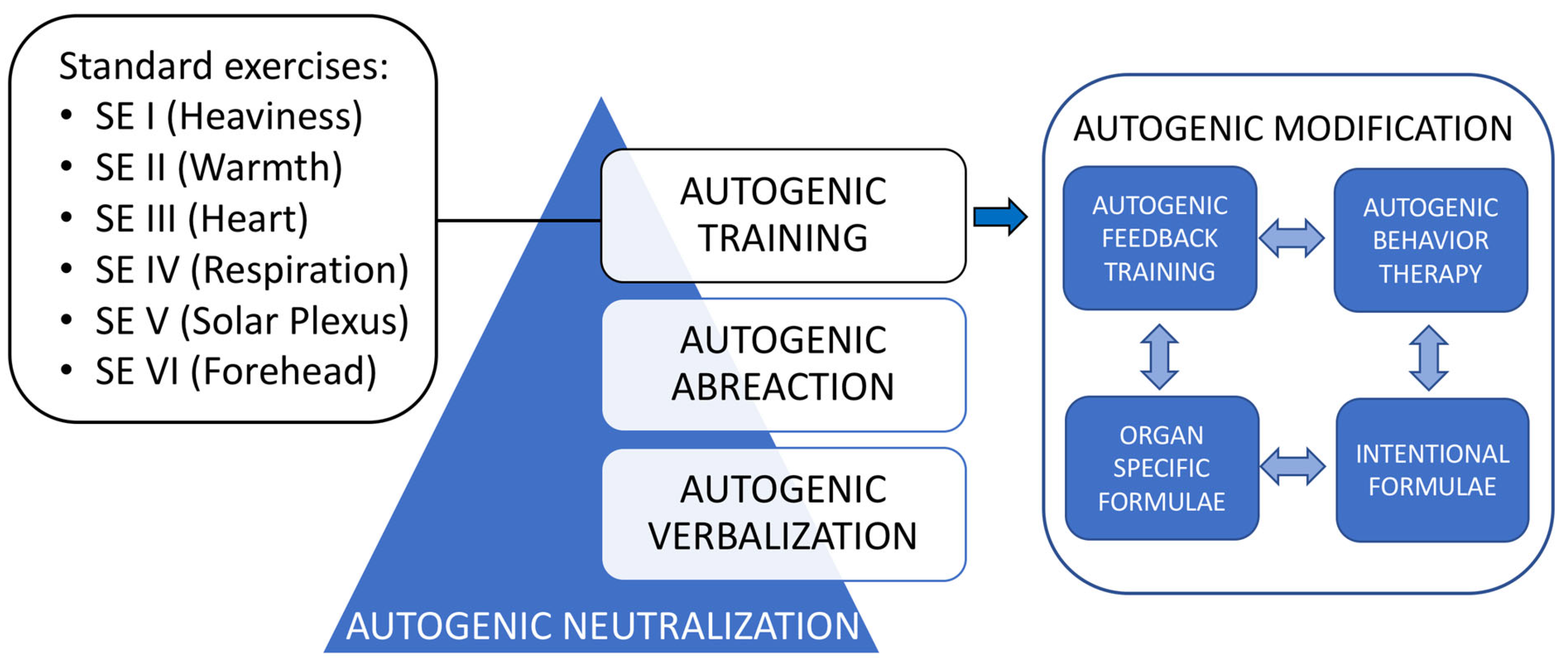Autogenic training is a relaxation method aimed at fostering sensations of calm and ease throughout the body to help lessen stress and worry.
More precisely, it helps ease anxieties that stem from situations or conditions that can overwhelm us with tension, frustration, or sadness, says Sanam Hafeez, PsyD, a neuropsychologist and Columbia University faculty member.
German psychologist Johannes Heinrich Schultz created autogenic training in the 1920s to address the bodily manifestations of stress by using relaxation exercises to gain some control over these responses.

Today, this approach is frequently combined with cognitive behavioral therapy, Hafeez notes, although it can also be practiced independently as a strategy to help people manage stress.
Benefits
The objective of most relaxation practices, including autogenic training, is to trigger the body’s natural relaxation response by slowing breathing, lowering blood pressure, and ultimately producing a greater sense of well-being.
Initially designed to teach people how to elicit physical relaxation by themselves, autogenic training is commonly integrated into therapy sessions to address anxiety symptoms, which Hafeez explains encompass both mental and physical signs of anxiety.
Research has shown that relaxation training, autogenic methods included, can reliably and meaningfully reduce certain anxiety symptoms.
“Conditions such as social anxiety disorder (SAD), generalized anxiety disorder (GAD), depression, and insomnia may benefit from autogenic training,” Hafeez explains.
Autogenic training also serves well for everyday stress management and can even be useful during panic attacks.
Drawbacks and limitations
Autogenic training should not supplant your existing treatment plan. If you are receiving psychotherapy or taking medications for anxiety, autogenic exercises should be used as an adjunct to your current care.
However, if you try methods like progressive muscle relaxation or autogenic training on your own (or with a counselor) and do not notice improvement in stress, frustration, sadness, or anxiety, Hafeez recommends consulting your primary care physician for referrals to mental health specialists who can evaluate your condition and help identify the best approach for your particular needs.
How to do it
Learning autogenic training is most effective when done with a trained professional, such as a therapist. Once you become familiar with the procedure, you can apply these relaxation practices independently.
Below, Hafeez outlines the steps commonly used in autogenic training to reduce stress and alleviate some anxiety symptoms.
- Get set up. Before starting, choose a quiet, comfortable spot to relax. Ideally, use the same place each time you practice. You may lie down or sit upright. Remove your glasses and loosen any tight clothing.
- Begin with your breathing. The initial step is to slow your breath. Ensure you are comfortable and take slow, even breaths. Once your breathing is steady, tell yourself, “I am completely calm.” Repeating this phrase can itself encourage a relaxed state.
- Focus attention on different areas of your body. Begin with your right arm and repeat the phrase, “My right arm is heavy, I am completely calm,” while maintaining slow, controlled breathing. Repeat this with the other arm and your legs, consistently returning to “I am completely calm.”
- Shift attention to your heartbeat. While breathing deeply, repeat six times, “My heartbeat is calm and regular,” then affirm, “I am completely calm.” Continue similarly with other body areas, including the abdomen, chest, and forehead. You might also follow a guided audio recording for instructions, which can help you fully relax and concentrate on the practice.
Other tips for relaxation
Autogenic training can be an effective tool for handling stress and encouraging relaxation. Still, there are additional strategies to halt stress and anxiety quickly. Here are eight tips to help you reduce stress and maintain calm.
1. Get anxious thoughts out of your head
Having a rough day? Grab a pen and paper and write it down. Recording your thoughts and feelings helps clear anxious ideas from your mind, which can reduce stress and promote relaxation.
To build a journaling habit, spend 15 minutes at the end of each day writing down the day’s worries.
2. Take a guided imagery break
Close your eyes and imagine a scene or memory that makes you feel relaxed. Picture what it sounds and smells like. What do you see and sense?
Guided imagery allows your mind to communicate to your body that it’s time to unwind. Use this technique when stress begins to rise or proactively to prevent stress from taking hold.
3. Soak up stress
A warm bath is an excellent way to ease sore muscles and relax the body, and it helps calm an exhausted, overtaxed mind. (If you don’t have a tub, take a shower or soak your feet in warm water.) Add Epsom salts and dim the lights. This is also a great opportunity to practice a few minutes of mindfulness meditation.
4. Tune in to a podcast
Unsure how to meditate or do deep breathing by yourself? Try a guided podcast. Plenty of podcasts walk you step-by-step through the process. They vary from 5 to 30 minutes, so you can pick one that fits your schedule.
5. Try the 3 x 3 technique
If pausing during a busy day for breathing makes you more anxious, begin with the 3 x 3 technique: take 3 minutes, three times a day, to focus solely on your breathing.
Use this time to pay attention to your breath or to practice a particular breathing method. It’s also an ideal chance to do mindfulness meditation, which helps you notice thoughts, feelings, and bodily states without reacting to them.
6. Practice yoga and tai chi
Both yoga and tai chi blend breathwork with movements or poses designed to cultivate calm and relaxation. Practicing them regularly can soothe the mind and relax the body.
7. Make time for music
Whether listening to a mellow tune, playing an instrument, or singing along, music is a powerful way to encourage relaxation.
Set aside 10 to 15 minutes daily for music. Sing or listen to favorite songs during a commute. Play an instrument after work. Or drift to sleep with soft music in the background.
8. Find people who are calming
Surround yourself with individuals who have a calming influence, especially during periods of high stress.
When to see a doctor
If you include autogenic training as part of a broader treatment approach, be sure to share any concerns with your physician or therapist. “While autogenic training isn’t likely to make symptoms worse, if you don’t improve after regular attempts at self-management, you may need additional tools and support,” Hafeez says.
Also, if you’re practicing autogenic techniques on your own, recognize their limits in treating mental health conditions.
Although you can learn some techniques independently, working with an expert—ideally a therapist trained in autogenic methods—offers the best chance of success. You may search online for a mental health professional experienced in autogenic training or ask your primary care doctor for a referral.
Another increasingly popular option is online therapy. Through subscription apps and services like Talkspace, Rethink My Therapy, Online-Therapy, and BetterHelp, you can connect with a therapist virtually or via text.
The bottom line
Autogenic training is a relaxation technique that can help reduce stress and foster a sense of calm in both mind and body.
While useful on its own for minor stress relief and basic relaxation, autogenic training should not replace psychotherapy or medication for significant mental health conditions.


















Leave a Reply
You must be logged in to post a comment.